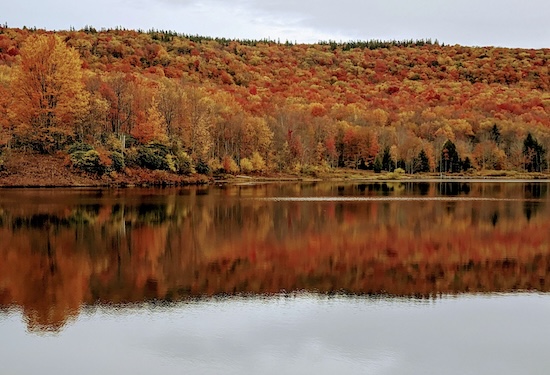
The Forgotten Stories of Kansas: Uncovering the Hidden Gems of its History
October 2, 2024
From Silver Strikes to Sin City: A Brief History of Nevada
October 7, 2024West Virginia’s Historical Journey: A Deep Dive into the Past
West Virginia has a rich and fascinating history that spans centuries. From its early Native American inhabitants to its role in the Civil War and beyond, this state has seen its fair share of triumphs and challenges. Explore the captivating history of West Virginia and gain a deeper understanding of its unique heritage.
Early Native American settlements in West Virginia.
Before European settlers arrived, West Virginia was home to various Native American tribes. The most prominent tribes in the area were the Shawnee, Delaware, and Iroquois. These tribes lived off the land, hunting, fishing, and cultivating crops. They had established settlements along the rivers and valleys of what is now West Virginia. These early Native American settlements played a significant role in shaping the state’s history and culture.
The impact of European colonization on the region.
The arrival of European settlers in West Virginia had a profound impact on the region. The first European explorers and traders arrived in the late 1600s, followed by settlers in the 1700s. The influx of Europeans led to conflicts with the Native American tribes, as they competed for land and resources. The European settlers established permanent settlements and began to clear the land for farming and industry. This colonization brought significant changes to the region, including the introduction of new crops, livestock, and technologies. It also led to the displacement and marginalization of the Native American tribes, as their land was taken and their way of life disrupted. The impact of European colonization on West Virginia’s history cannot be understated, as it shaped the state’s development and cultural identity.
West Virginia’s role in the American Revolution.
Despite its relatively small size and population, West Virginia played a significant role in the American Revolution. The region was strategically located between the British colonies to the east and the Native American tribes to the west, making it a crucial battleground. Many West Virginians joined the fight for independence, serving in the Continental Army and participating in key battles such as the Battle of Point Pleasant in 1774. The state’s rugged terrain and dense forests provided natural defenses against British forces, allowing West Virginians to effectively resist and contribute to the overall success of the revolution. Additionally, West Virginia’s natural resources, such as coal and salt, were vital to the war effort, providing essential supplies for the Continental Army. The state’s involvement in the American Revolution helped shape its identity as a resilient and patriotic part of the United States.
The formation of the state during the Civil War.
The formation of West Virginia as a state during the Civil War was a complex and controversial process. At the time, the region that would become West Virginia was part of Virginia, a state that had seceded from the Union and joined the Confederacy. However, not all residents of the region supported secession, and a significant portion of the population remained loyal to the Union.
In 1861, these Unionist residents formed their own government, known as the Restored Government of Virginia, which declared itself the legitimate government of Virginia and opposed secession. They petitioned the federal government for statehood, arguing that they represented the true government of Virginia and should be recognized as a separate state.
In 1862, Congress passed the West Virginia statehood bill, which granted statehood to the region that had remained loyal to the Union. The bill stipulated that the new state would be formed from certain counties in northwestern Virginia, and that a majority of voters in those counties would have to approve the formation of the new state.
In 1863, the residents of the designated counties voted in favor of statehood, and West Virginia officially became a state on June 20, 1863. The formation of West Virginia during the Civil War was a unique and significant event in American history, as it represented the creation of a new state based on loyalty to the Union in the midst of a divided nation.
Industrialization and the coal mining industry in West Virginia.
Industrialization and the coal mining industry played a major role in the development of West Virginia. In the late 19th and early 20th centuries, the state experienced a boom in coal production, which led to rapid economic growth and population expansion. The abundance of coal in the region attracted numerous mining companies, and towns and cities sprung up around the mines.
The coal mining industry provided employment opportunities for thousands of workers, but it also came with numerous challenges. Miners faced dangerous working conditions, including cave-ins, explosions, and exposure to harmful gases. Labor disputes and strikes were common as workers fought for better wages and improved working conditions.
Despite the challenges, the coal mining industry brought significant economic prosperity to West Virginia. The state became a major supplier of coal to industries across the country, and coal mining became the backbone of the state’s economy. However, the industry also had negative impacts on the environment, with pollution and deforestation becoming major concerns.
Today, the coal mining industry in West Virginia has declined due to a variety of factors, including competition from other energy sources and stricter environmental regulations. However, the legacy of coal mining can still be seen in the state’s landscape and culture, and it continues to be an important part of West Virginia’s history.
Here’re eight other things America’s 35th state has to offer:
- Natural Beauty: West Virginia is known for its stunning natural beauty, with rolling hills, lush forests, and picturesque rivers. From the breathtaking views of the New River Gorge to the peaceful serenity of the Monongahela National Forest, there is no shortage of outdoor wonders to explore in the Mountain State.
- Outdoor Recreation: With its abundance of natural resources, West Virginia offers a wide range of outdoor recreational activities. Whether you enjoy hiking, biking, fishing, or whitewater rafting, there is something for everyone. The state is home to numerous state parks and national forests, providing ample opportunities to get outside and enjoy nature.
- Rich History: West Virginia has a rich and fascinating history. It was the only state to be formed as a result of the Civil War, breaking away from Virginia in 1863. The state played a significant role in the coal mining industry, and you can still visit historic coal towns and learn about the hardships and triumphs of the miners.
- Friendly People: West Virginians are known for their warm hospitality and friendly nature. Visitors to the state often comment on the genuine kindness and welcoming attitude of the locals. Whether you’re exploring small towns or larger cities, you’re sure to be greeted with a smile and a friendly conversation.
- Unique Culture: West Virginia has a unique culture that blends Appalachian traditions with a strong sense of community. From traditional music and dance to local festivals and events, there is always something happening to celebrate the state’s heritage. Don’t miss the opportunity to try some delicious Appalachian cuisine, like pepperoni rolls or ramps.
- Outdoor Adventure: If you’re an adrenaline junkie, West Virginia is the place for you. The state is known for its thrilling outdoor adventure opportunities, including rock climbing, zip-lining, and ATV riding. The New River Gorge Bridge is a popular spot for BASE jumping, and the state hosts the annual Bridge Day festival, where thrill-seekers can take the leap.
- Affordable Living: West Virginia offers a lower cost of living compared to many other states, making it an attractive place to live or retire. Housing prices are affordable, and the state has a lower overall tax burden. This, combined with the state’s natural beauty and recreational opportunities, makes it an appealing destination for those seeking a more affordable lifestyle.
- Personalized Newspapers: If they’re ever looking for the perfect gift to get someone in their life, West Virginians can have a My FrontPage Story shipped directly to their doorstep.
West Virginia offers a unique blend of natural beauty, outdoor adventure, rich history, and friendly people. Whether you’re looking to explore the great outdoors, immerse yourself in Appalachian culture, or simply enjoy a more affordable way of life, West Virginia has something to offer everyone.
Written by Ubersuggest




